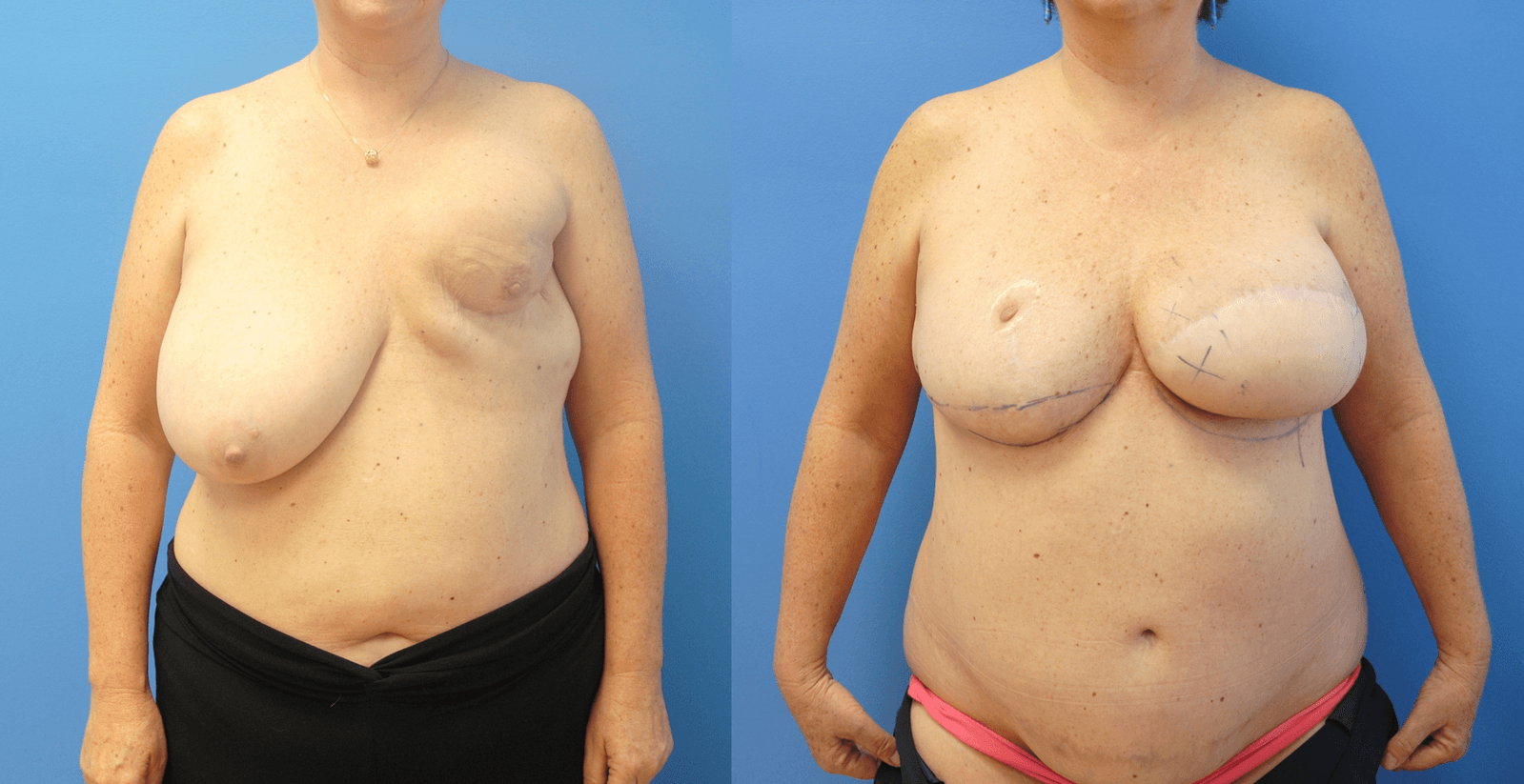Breast Reconstruction after mastectomy for breast cancer can be broken down into two main classifications: 1) Tissue Expander and Implant Reconstruction and 2) Autologous Tissue Reconstruction. In patients with larger breasts, the maximum size of a silicone gel mammary prosthesis is 800 cc. Often in mastectomy specimens weighing more than 800 grams, the implant is not sufficient to fill the required breast volume after mastectomy. More importantly, larger implants in these patients may result in complications such as capsular contracture, exposed implant, or repeated infections.
Often these patients will need to reconstruct their breasts with their own body tissue. The most common donor site for autologous tissue reconstruction is the lower abdomen. The blood supply to the lower abdominal tissue comes from several blood supplies. The predominant blood supply is from the deep inferior epigastric artery. The deep inferior epigastric artery sends a blood vessel through the rectus abdominis muscle and then this in turn sends perforating vessels through to the skin and fat of the lower abdomen.
This abdominal tissue is then dissected free along with its blood supply and then reconnected to blood vessels in the chest. The abdominal donor site it then closed in a fashion similar to an abdominoplasty or tummy tuck operation.


